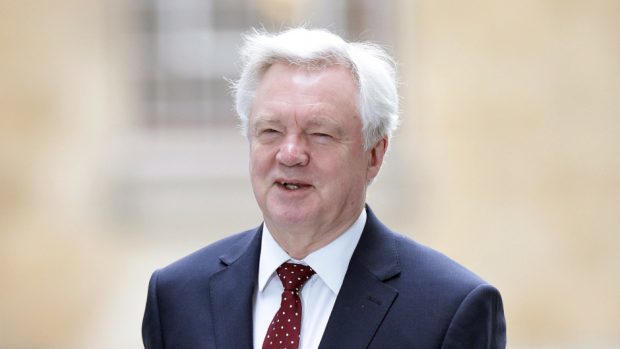Brexit Minister David Davis caused confusion at Westminster yesterday after he suggested that MPs may not get to vote on a final deal until after the UK leaves the EU.
At the Brexit committee, Mr Davis claimed Brussels negotiators would push talks to the March 2019 deadline, meaning no Westminster vote could take place before then.
When asked whether that meant MPs would not get their say until after the UK leaves the EU, he said: “It could be, yes, it could be. It (the vote) can’t come before we have the deal.”
But just an hour later, Prime Minister Theresa May told the MPs that they would be able to vote on the final deal.
And a few hours later, Mr Davis’s own department was forced to issue a retraction.
At PMQs, Mrs May assured the Commons they would be able to vote.
She said: “The timetable under the Lisbon Treaty does give time until March 2019 for the negotiations to take place, but I am confident because it is in the interests of both sides, and it is not just this parliament that wants to have a vote on that deal, but actually there will be ratification by other parliaments that we will be able to achieve that agreement and that negotiation in time for this parliament to have the vote that we committed to.”
Downing Street later insisted that Mrs May had confidence in Mr Davis, and the statement issued by his department was “totally aligned” with Number 10’s approach.
It was Mrs May’s “intention and full expectation that we will secure a deal in good time before we leave and that MPs will vote on it before we leave”, they said.
Officials in the Department for Exiting the European Union issued a statement clarifying the Brexit secretary’s comments, claiming they were in response to “hypothetical scenarios”.
A spokesman for Mr Davis said: “We are working to reach an agreement on the final deal in good time before we leave the EU in March 2019.
“Once the deal is agreed we will meet our long-standing commitment to a vote in both Houses and we expect and intend this to be before the vote in the European Parliament and, therefore, before we leave.”
Opponents said the contradictory statements highlighted the shambles at the heart of the UK Government over Brexit.
Shadow Brexit secretary Keir Starmer said: “David Davis and Theresa May’s comments only add to the confusion and chaos over the government’s approach to the Brexit negotiations.
“Labour has been clear from the outset: parliament must have the final say on the terms of Britain’s exit from the European Union before March 2019.”
